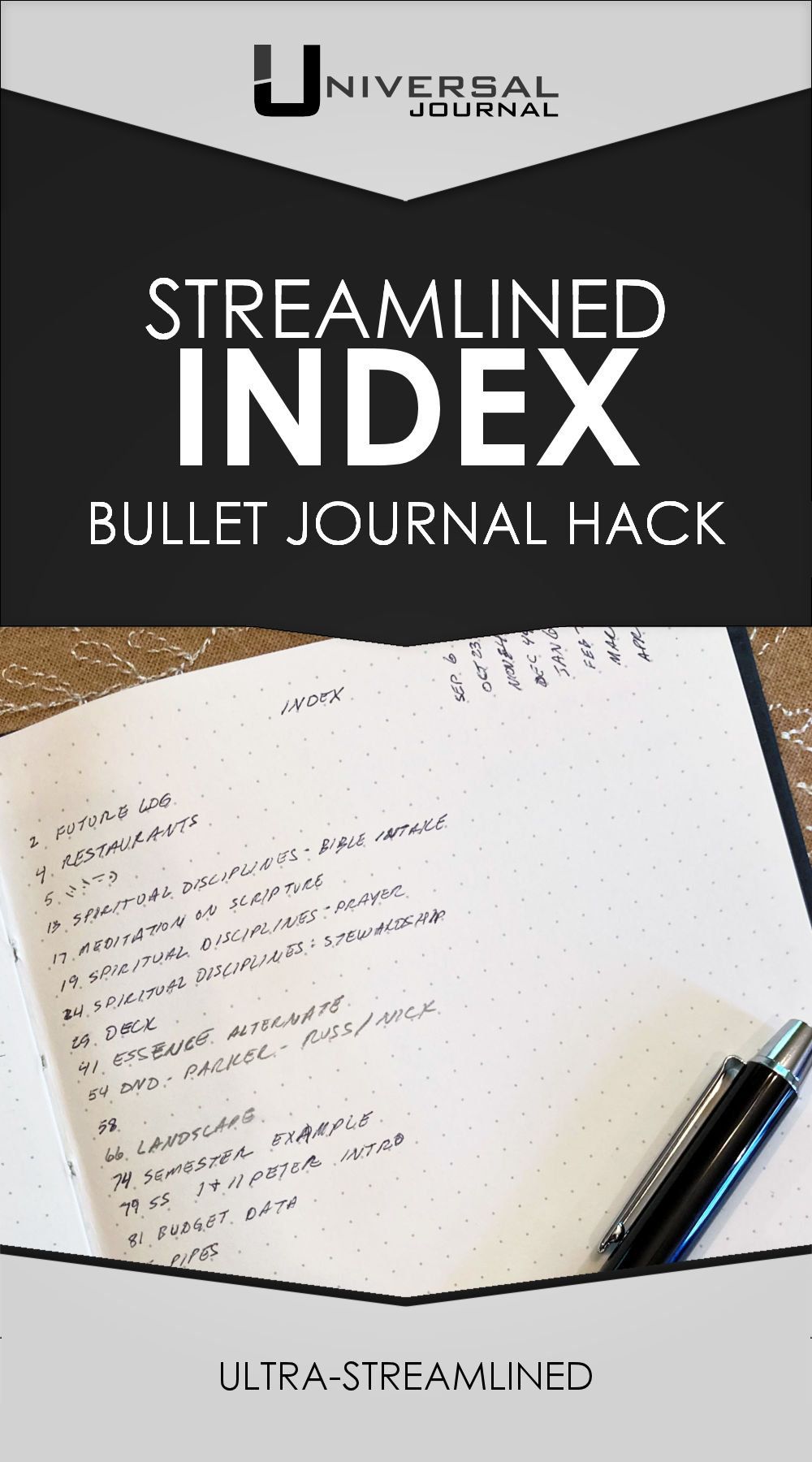The index is crucial for many of bullet journalers. Those who use the bullet journal method closer to its original design find the index useful (since returning to old content is a fairly regular thing) but there is always the matter of how. This is an ultra-streamlined take on the index.
First, I wish I could remember where I saw this idea in order to give credit. It's brilliant and so simple to do. Given the uncertainty of required space for the index, and the uncertainty of the required space for the future log, why not separate these two things? Putting the index in the back of the book solves this issue with grace.
I can set up a spread or two for the future log in the front but in the back there is all the space I will ever need. When the index meets the content or even gets close to it, it's time to move to a new notebook.
Another trick (kudos to Christina77star) is the separation of the index into categories. I might leave the regular things in one page of the index (a list of class lectures or meetings, for example) and the other page of the spread for everything else. This way the index doesn't get clogged with everything going on. I can scan the lectures list if that's all I need at the moment, or scan the general list for other stuff.
You could also sub-divide each page of the index. Perhaps one page could be split into columns, with maybe work related lists in one column and life stuff in the other. Personally, I keep the months separated from the rest of the index.
I also use the index for blank pages. My workflow involves a pattern of spreads, and a dash of OCD makes me prefer the pattern to remain unchanged throughout the notebook. On the occasion where something irregular happens (such as a list or collection) blank pages may occur. Each blank page is recorded in the index. Later, when I need a blank page (perhaps for a new list or collection) I pick one already recorded so there's no need to use a new page.
My color coding system also helps. I don't separate work and life stuff by columns in the index but by color. I have a 3-in-1 pen with two inks and mechanical pencil. This three color implement makes all sorts of options possible and I don't have to carry a bunch of stuff with me.
The official Bullet Journal website also has some tips for using the index:
- Indexing also provides a great visual timeline. Some people like to put a marker around their indexed monthly logs to provide a better birds-eye view.
- If you work on multiple complex or long-term projects, you can create a dedicated Index for each. Dedicated Indexes can also be a great way to help organize notes for different classes.


Comments
Post a Comment